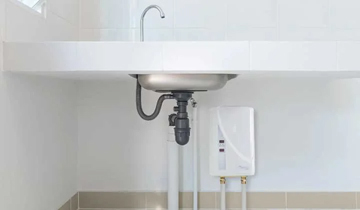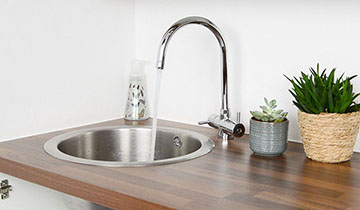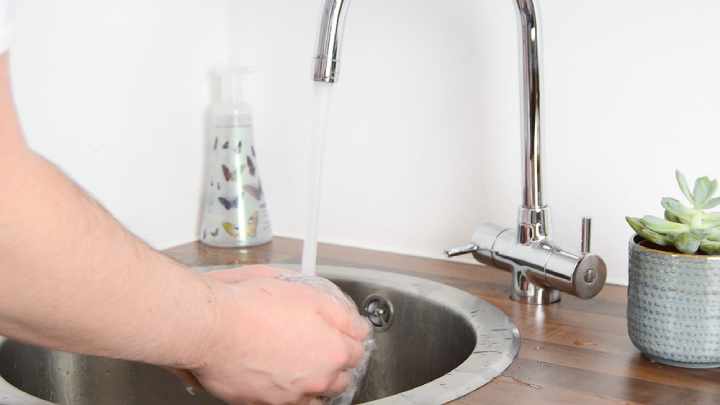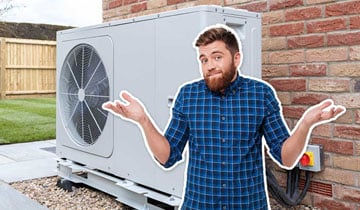6 min read
What are instant water heaters and are they any good?
According to research by Water UK, the average person in the UK uses 142 litres of water a day. However, the same research also highlights that many...
6 min read
 Sam Hills
:
Aug 23, 2022
Sam Hills
:
Aug 23, 2022

If you’re reading this, then the chances are you’re weighing up the pros and cons of buying a Micro Electric Boiler (MEB) for your home or project. There are three fundamental things that you need to understand to make sure that a Micro Electric Boiler is right for you. These are:
Just by understanding these three key areas, you’ll be certain that you’ll make the right decision to install a Micro Electric Boiler.
The first key point is to understand the electrical supply needed. Depending on which model you choose, you will need to have a dedicated supply circuit that is designed to work safely under loads of 20 to 40 amps. This circuit should be connected at the distribution board (or consumer unit) by a suitably rated Mini Circuit Breaker (MCB).
For example, the most popular Micro Electric Boiler model is the 9.6kW version. It has a maximum load of 40 amps and requires a dedicated 40 amp power supply. This means that you need to use a cable rated up to 40 amps (usually 6mm2 cores in domestic installations) and a 40 amp MCB in the distribution board.
However, the Micro Electric Boiler does not always use the maximum load. In fact, it only uses it for a limited time because of the intelligent energy saving software inside. Saying this, you should still design the power supply circuit to carry the rated maximum load requirement of the appliance safely.
Power supply check list:
All of the technical information associated with maximum loads and required cable sizes can be found on the website.
This blog by 1stelecticians.co.uk gives a great overview of the different cable requirements for different circuit types and current loads.
The flow rate is the amount of water that flows through an outlet, such as a tap or shower head, over a set time. The flow rate affects how your shower feels and how long a tap takes to fill a kettle or bath. In the UK we measure flow rate as litres per minute (LPM). Flow rate is different to water pressure. Water pressure refers to the force that moves the water through your pipes and is commonly measured in BAR.
How flow rate affects hot water temperature
With a Micro Electric Boiler, or any instantaneous water heater, the water flow rate affects the maximum temperature that you can heat your water to. This is because water that is moving faster needs to be heated quicker which requires more energy than heating slower moving water.
With traditional instant hot water heaters and electric showers, the only way to adjust the temperature is to adjust the flow rate by slowing it down. For cooler water, you must increase the flow rate. With a traditional instant hot water heater or an electric shower, you also get temperature fluctuations based on flow rate. For example, if you are in the shower and somebody flushes a toilet or runs a tap, the flow rate to the shower drops and the water gets hotter. Without a high temperature cut out this can result in scalding, which is not good! The Micro Electric Boiler is intelligent, it measures the flow rate and adjusts the energy output to ensure the water is always at the required temperature. This is both safer and more energy efficient.
Know your flow!
Do you know the flow rate of your kitchen tap or shower? I didn’t before we started working on Micro Electric Boilers, so I had no idea if 5.5 litres per minute was good or not. If you are thinking about purchasing a Micro Electric Boiler you need to understand the flow rate in your home, or at least the typical UK averages. When you know your flow rate, you can use this information to select the right model for you and know exactly if the Micro Electric Boiler is the best fit for your project.
How to test your flow rate
You can test the flow rate of any water outlet in your home with a simple measuring jug that has a 1 Litre mark and the stopwatch on your phone. Simply hold the jug under the water outlet, turn the tap on and time how long it takes to fill the jug up to 1 litre. This gives you the flow rate from this outlet in litres per minute.
Example
We tested the kitchen sink and shower at ThermoSphere HQ and we have a flow rate of 5.4 litres per minute for the sink and just over 6 litres per minute for the shower. This is fairly typical for the UK where taps have average flow rates of between 5-6 litres per minute and low flow eco showers have flow rates of between 6 to 8 litres per minute. With these flow rates we could realistically expect a 9.6kW Micro Electric Boiler to achieve 40°C water all year round.
Flow rate check list:
Water temperature is an important piece of information to equip yourself with when deciding if the Micro Electric Boiler is right for you and which model to choose.
You need to understand two temperatures:
How hot is your cold water?
Most people, including me before I started working on Micro Electric Boilers, assume that cold water is really cold. Have a guess now at the temperature of your cold water and make a mental note. Most people assume it’s around 5°C. But, according to the Energy Saving Trust, cold water in the UK averages at ~10°C in winter and ~20°C in summer.
These temperatures sounded high to us (because our water feels icey cold!) so we checked the incoming water temperature at ThermoSphere HQ. In winter our cold water was coming in at 19°C and in summer it is 26°C. This is obviously very different to the expected value, so I checked the temperatures at my house and in winter I was getting 16°C and in summer I’m now getting 22°C. These variances show that you can’t really judge by “feel” and the UK averages are not necessarily a good way to calculate performance in your property.
Because of this we recommend using a thermometer or temperature probe to check the actual temperature of your cold water. Depending on your project timeline you may not be able to get winter and summer temperatures but taking at least one reading will give you a reference point that you can use to judge whether the UK averages are going to give you an accurate idea of your expected performance.
How hot is your hot water?
We’ve covered the incoming temperature of your cold water, but do you know how hot your hot water is and how hot you like your shower? Most people, unless you have a fancy digital shower, don’t have a clue!
Here are few hot water facts to consider:
Mira showers recommend a max shower temp of 38°C to ensure your skin stays hydrated with natural oils and does not become dry and itchy.
The NHS stipulates that, in care environments, hot water must be limited to 41°C for basins and showers and 43°C for baths. This is to prevent scalding.
According to HSE, water temperatures of 44°C and above cause scalding.
The NHBC states that washing up liquid and hand soap is commonly tested at 45°C so kitchen hot water should not be delivered at temperatures any higher than this.
Since 2010, it has been a legal requirement to limit delivered hot water (from taps and showers) in new builds to 48°C using a Thermostatic Mixing Valve.
Based on this information, ThermoSphere recommend that you select a hot water temperature of around 38°C and you should use this temperature as a guide when selecting the right Micro Electric Boiler for you. Using water at lower temperatures benefits your hair and skin, ensures dish soap works properly and is a lot better for the environment as you’re using a lot less energy to heat your water. This also has an impact on your running costs and energy bills, which is a bigger consideration than ever before.
Water temperature check list:
After reading this blog you will now understand that equipping yourself with some basic information will help you to make an informed decision whether a Micro Electric Boiler is a good fit for you.
Here is a recap of the 3 things you need to check or be aware of so that you can make the right choice:
If you’d like a flow rate that’s higher than the examples listed for single and tandem systems on the instructions and data sheet, then a Micro Electric Boiler won’t be the best solution for you. You should investigate electric boilers with a storage cylinder instead.
If you still have any questions about what the best Micro Electric Boiler is for you, then please get in touch. We will be able to add a bit more detail if you need it and help you choose the right one for your project.
If you decide to go ahead, we can also arrange your order through one of our many resellers and organise next day delivery should you need it.

6 min read
According to research by Water UK, the average person in the UK uses 142 litres of water a day. However, the same research also highlights that many...

3 min read
How many times a day have you needed to run water, just waiting for it to get hot? It’s a massive waste! In fact, in the UK, we waste 65.5bn litres...

9 min read
There has been and continues to be a lot of talk around heat pumps being the go-to low-carbon alternative for heating our homes and, to be fair,...